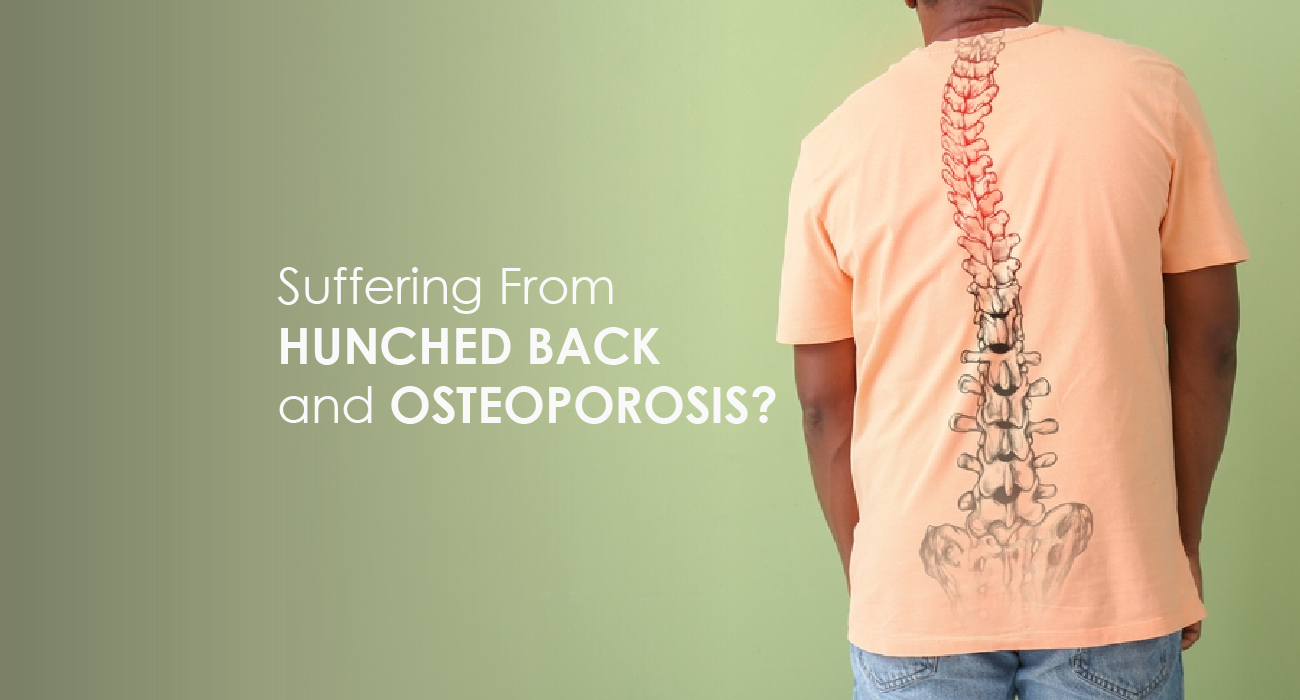07/07/2022
Osteoporosis is a bone disorder that frequently weakens the bones, making them fragile. Patients with osteoporosis experience bone loss largely in their upper spine (thoracic spine). Eventually, the bone cracks, causing back pain, height loss, and kyphosis (hunched posture). Sometimes known as "hunchback," is a painful condition in which the natural curve of the middle and upper spine increases, resulting in a "hunched over" posture. Here we’ve discussed the correlation between hunchback and osteoporosis and how to treat such cases if you’re suffering from the same. Our expert professional practicing Spine Replacement in Jaipur has discussed the same.
Why does Osteoporosis cause Kyphosis in some people?
The most prevalent cause of kyphosis, or hunchback, is the collapse of the vertebral bones (neck bones) due to osteoporosis. Although this illness is more common in women, it can also affect men.
Osteoporosis causes the vertebral bones in your spinal column to weaken over time, putting them at risk of fracture. Wedge-shaped fractures and vertebral compression result in frontal vertebral collapse. As a result, the height of the vertebra at the front lowers while remaining basically constant at the rear. Because of the unequal bone loss, the spine bends forward and causes kyphosis.
What are the symptoms of Osteoporosis and Kyphosis?
Osteoporosis, also known as a "silent" illness, may not show any signs of bone loss for many years until a fracture occurs, causing significant pain and impairment.
Osteoporotic fractures are most commonly observed in the hip, spinal joints (vertebrae), and wrist. Vertebral osteoporosis can be dangerous since it might limit daily tasks such as climbing stairs and bending forward. Any or all of the following symptoms may be observed depending on the site of the fracture:
- Height loss due to vertebral compression and shortening
- Slanted shoulders
- Breathing problems
- Slouching posture
- Backache
- Hunched position
What are the treatment options that can treat Kyphosis caused by Osteoporosis?
Kyphosis treatment is determined by your age and the severity of your condition.
- Non-surgical treatment can aid in the strengthening of your back muscles and the correction of distorted posture.
- Pain relievers and osteoporosis medications that enhance bone strength are common non-surgical treatments for kyphosis.
- A body brace or physical therapy might help improve weak back muscles.
- If you are overweight, your treatment plan may include a diet to help you achieve and keep a healthy body weight.
- Surgical procedures may be indicated to address the hunched back in addition to treating osteoporosis or any other underlying cause. Spinal reconstructive surgery may relieve pressure on a pinched nerve and stabilize the spine in cases of severe kyphosis. Spinal fusion permanently connects two or more vertebrae. This reduces uncomfortable movement between the vertebrae and has the potential to strengthen the spine.
What are the complications associated with Osteoporosis and hunched back if not treated early?
Delays in treating osteoporosis can result in severe bone fractures, particularly in the spine and hip. One in every three women will suffer an osteoporotic fracture over their lifetime.
Hip fractures can cause disability and significant discomfort, and may necessitate surgery.
Spinal fractures can cause a hunched back, resulting in severe discomfort and the need for surgery.
Hunchback can cause respiratory difficulties, digestive issues, and body image issues.
Even slight falls or bumps into household items such as furniture can result in fractures in people with osteoporosis. There may be "spontaneous fractures," or fractures that occur without any trauma.
If you or someone you know is experiencing the symptoms of a hunchback and is prone to osteoporosis, consult our panel of the best doctors in Jaipur.

